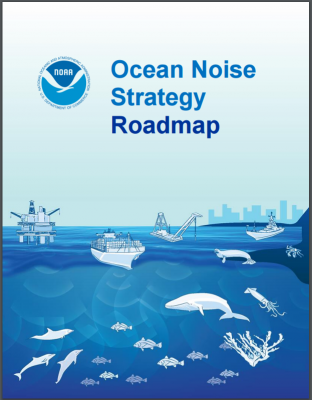The National Oceanic and Atmospheric Administration’s Fisheries Service released today the final version of its plan for managing ocean noise and its effects on marine life.

NOAA’s Ocean Noise Strategy Roadmap is a guide for the agency’s use during the next 10 years in reviewing the status of the science on ocean noise. NOAA said it is already taking on some of these recommendations, such as the recent launch of an underwater network of acoustic monitoring sensors. The roadmap suggests roles for continuing partnerships and starting new ones with other federal agencies, industries, academic researchers, environmental advocates and others.
Supporter Spotlight
Sound is critical for the survival of many marine animals. It’s a primary means of communication, orientation and navigation, finding food, avoiding predators, and mate selection. Ocean noise can be caused by natural or human sources.
“Sustainability and resiliency of marine resources are important to NOAA,” said Eileen Sobeck, assistant NOAA administrator for fisheries. “We knew we had to have a vision for understanding and addressing how growing levels of ocean noise are affecting marine animals and their habitats in complex ways, and the roadmap provides that.”
The document summarizes the status of the science, details relevant NOAA management and science capacities and recommends actions that could be taken to achieve more comprehensive management of noise effects.
“NOAA’s ocean noise strategy outlines several approaches that we can take with other federal and non-federal partners to reduce how noise affects the species and places we manage,” said W. Russell Callender, assistant NOAA administrator for its National Ocean Service. “It also showcases the importance that places like national marine sanctuaries have as sentinel sites in building our understanding of ocean noise impacts.”
NOAA received more than 85,000 responses during public comment on the draft roadmap, and experts considered those comments for the final version.
Supporter Spotlight
The roadmap comes a month after NOAA Fisheries released its final acoustic guidance to better predict how man-made underwater sounds affect marine mammal hearing. The technical guidance is one example of a targeted action the roadmap recommends the agency conduct.







